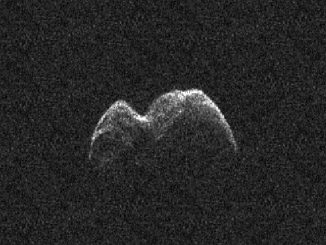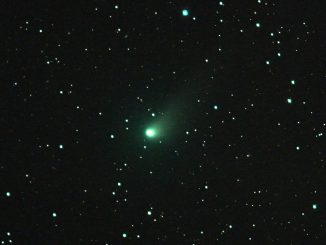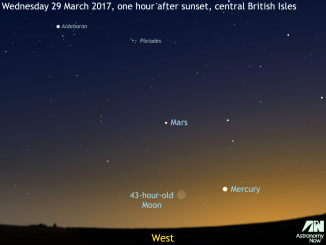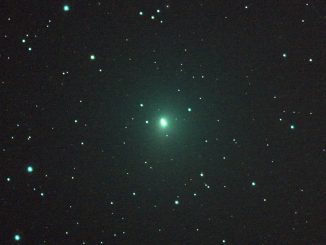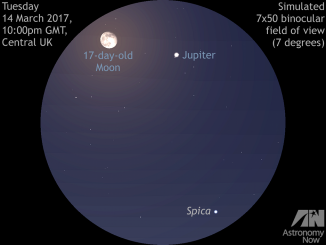
See the Moon meet the ringed planet on 14 May
In the small UK hours of Sunday 14 May, the rising 17-day-old Moon in the southeast lies just 2.4 degrees to the upper-left of Saturn, meaning that the pair will comfortably fit in the same field of view of a typical 10×50 binocular. The ringed planet is now about a month from opposition, so now’s the time to hone your observing skills.




